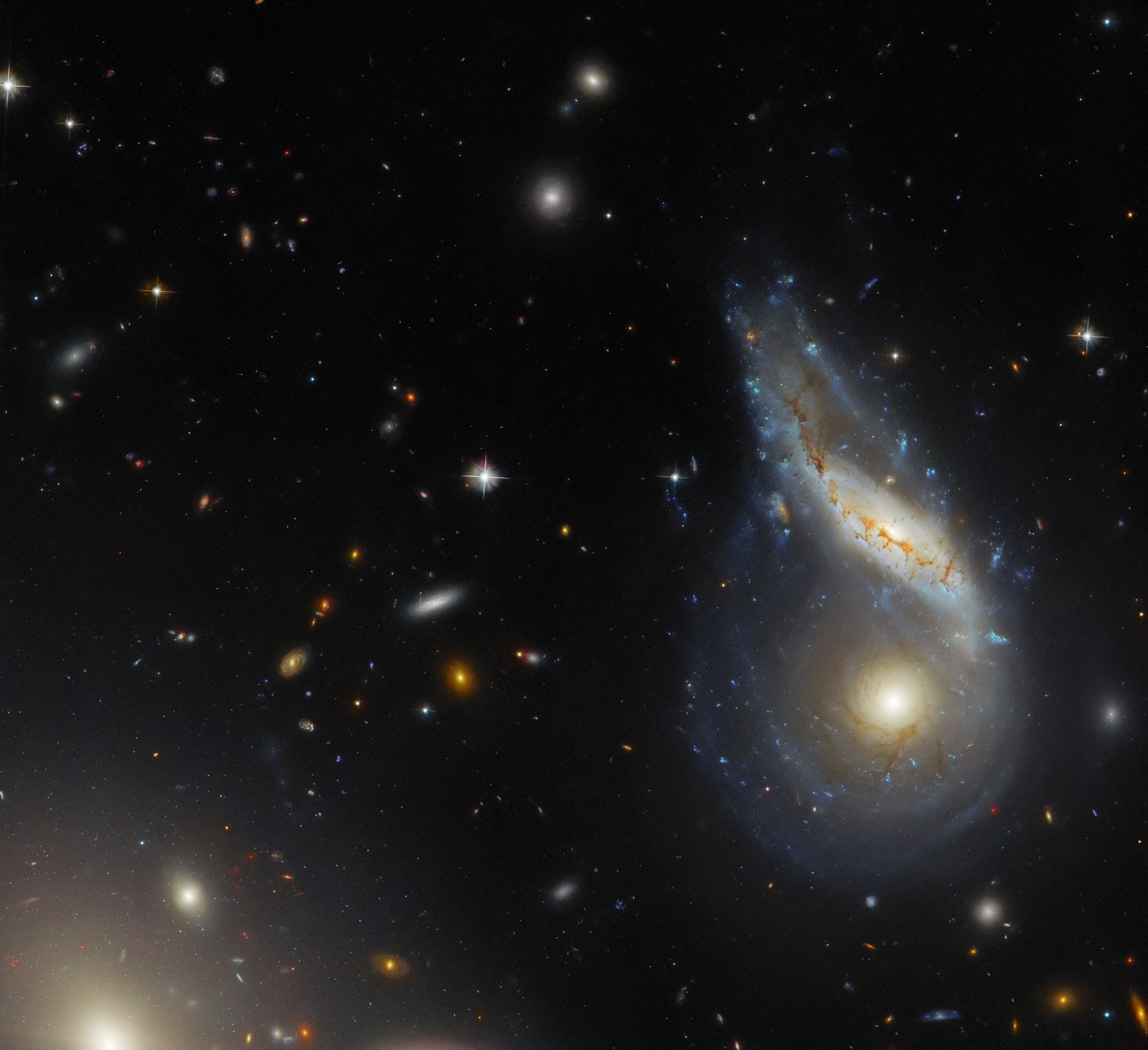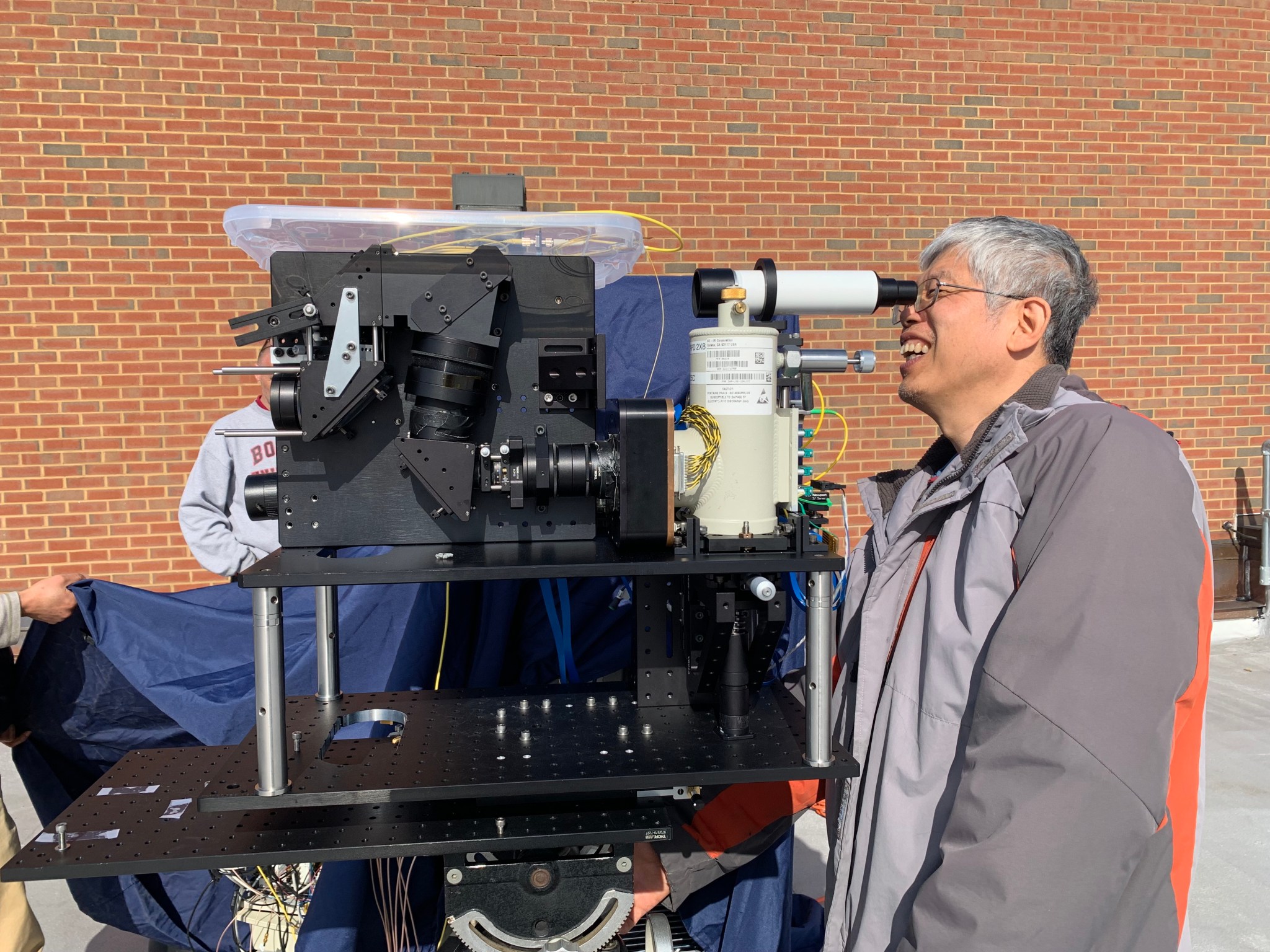
This NASA/ESA Hubble Space Telescope image features Arp 122, a peculiar galaxy that in fact comprises two galaxies – NGC 6040, the tilted, warped spiral galaxy and LEDA 59642, the round, face-on spiral – that are in the midst of a collision. This dramatic cosmic encounter is located at the very safe distance of roughly 570 million light-years from Earth. Peeking in at the lower-left corner is the elliptical galaxy NGC 6041, a central member of the galaxy cluster that Arp 122 resides in, but otherwise not participating in this monster merger.
Galactic collisions and mergers are monumentally energetic and dramatic events, but they take place on a very slow timescale. For example, the Milky Way is on track to collide with its nearest galactic neighbor, the Andromeda Galaxy (M31), but these two galaxies have a good four billion years to go before they actually meet. The process of colliding and merging will not be a quick one either: it might take hundreds of millions of years to unfold. These collisions take so long because of the truly massive distances involved.
Galaxies are composed of stars and their solar systems, dust, gas, and invisible dark matter. In galactic collisions, therefore, these constituent components may experience enormous changes in the gravitational forces acting on them. In time, this completely changes the structure of the two (or more) colliding galaxies, and sometimes ultimately results in a single, merged galaxy. That may well be what results from the collision pictured in this image. Galaxies that result from mergers are thought to have a regular or elliptical structure, as the merging process disrupts more complex structures (such as those observed in spiral galaxies). It would be fascinating to know what Arp 122 will look like once this collision is complete… but that will not happen for a long, long time.
Text credit: European Space Agency
Media Contact:
Claire Andreoli
NASA’s Goddard Space Flight Center, Greenbelt, MD
claire.andreoli@nasa.gov
from NASA https://ift.tt/dN2aT7v


No comments:
Post a Comment